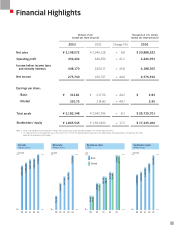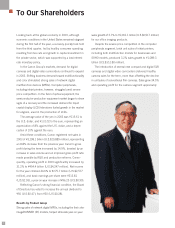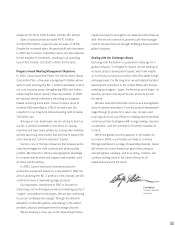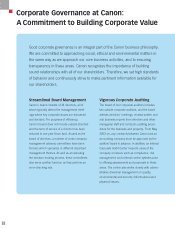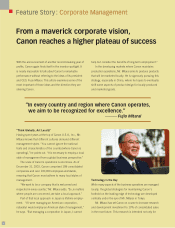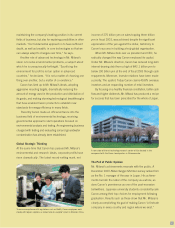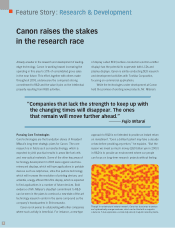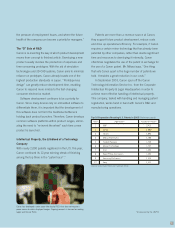Canon 2003 Annual Report Download - page 13
Download and view the complete annual report
Please find page 13 of the 2003 Canon annual report below. You can navigate through the pages in the report by either clicking on the pages listed below, or by using the keyword search tool below to find specific information within the annual report.
Behind Mr. Mitarai’s decision to build new production
facilities at home rather than chasing after cheap labor
abroad is a deeply held belief that Japan must maintain a
strong manufacturing base to ensure itself of a vibrant
economy in the years ahead. The validation of his vision
will lie in Canon’s ability to produce key products more
cost-effectively in Japan than abroad over the long run.
Commitment to Global Production
To be sure, the development of automation systems for
domestic factories signals an important development in
Canon’s global production strategy. But that certainly does
not mean Canon will abandon overseas production. In fact,
by the end of 2003, the proportion of Canon goods manu-
factured outside Japan had reached 42%, a 4% year-on-
year increase.
In all its overseas operations, Canon has continued to
place priority on its policy of being a good corporate citizen
of the community, which entails adhering to local work
customs and striving to produce products that will be
marketed locally. Mr. Mitarai says on the subject of China:
“I want to put in place a production system suitable for
China, whereby products are designed for the Chinese
market [in China] and distributed there.”
In-house Development of Production Tools
Canon recently purchased a mold-production company,
adding to its formidable ability to produce many of the metal
molds needed for production. Canon also produces many
of the tuning and measuring tools needed for the develop-
ment, maintenance and repair of its production equipment.
Key tools such as these are not marketed for sale; they
are reserved as crown jewels within the Canon Group.
The ability to develop its own tools of production provides
quality assurance as well as adds speed and flexibility
when retooling is necessary, which is a crucial advantage
in the cell production environments Canon has set up.
Shopping outside the company for production tools,
according to Mr. Mitarai’s way of thinking, not only limits
Canon creatively. Over the long run, in-house tool devel-
opment can also cut costs and help prevent prying eyes
from getting a glimpse at the secrets of Canon’s core
proprietary technologies.
At Canon Virginia, Inc., the use of lasers enables small-batch production of
many types of products.
Mr. Mitarai visits Canon production facilities on a regular basis to obtain a
firsthand perspective of the production systems in action.
At the Ami Plant in Japan, highly flexible and cost-efficient factory automation is
employed for the production of toner cartridges.
11


